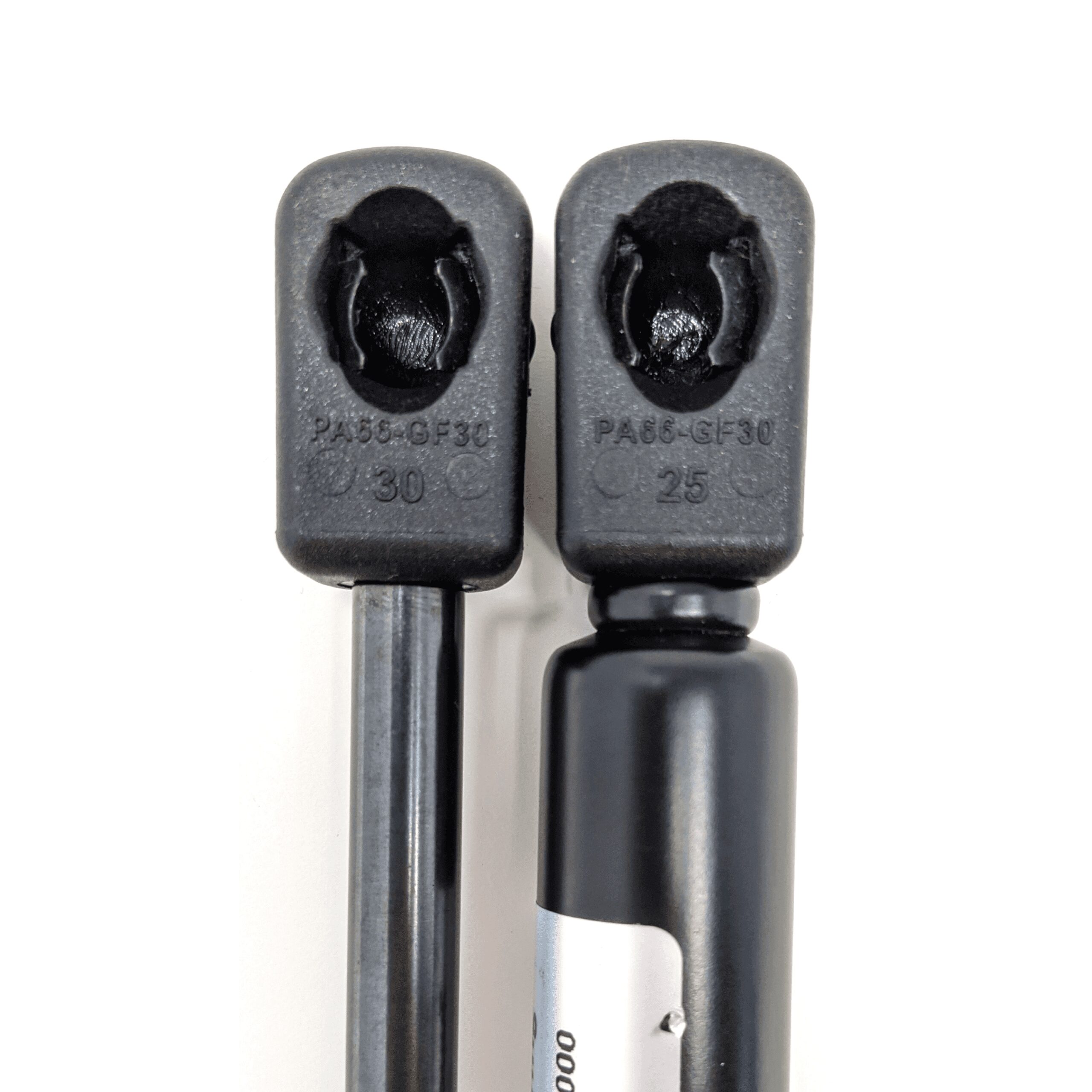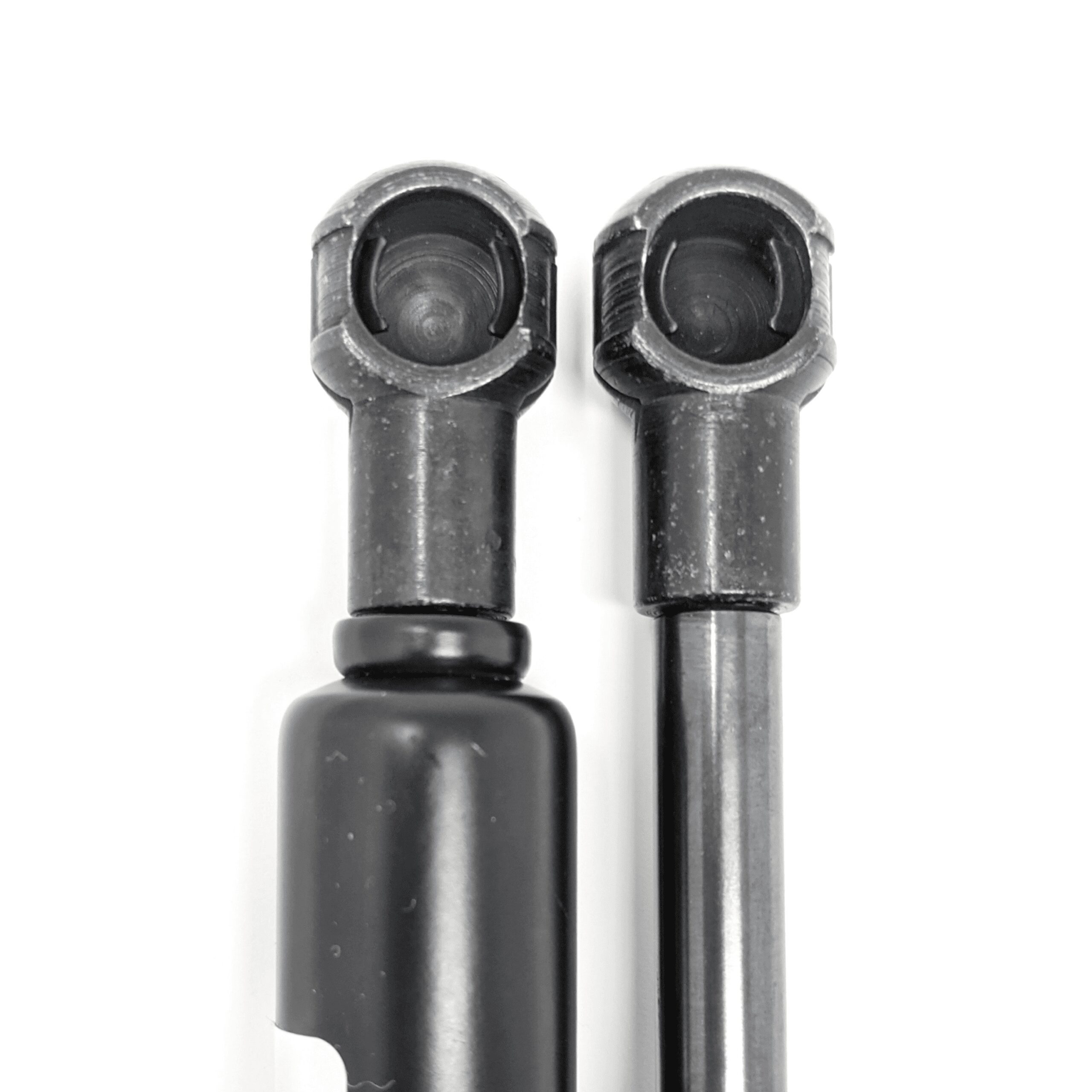Gas springs use sliding pistons and compressed gas to store potential energy and are used to move, lift, counter-balance, or resist and slow movement on an object. They are frequently used in the auto industry to lift hoods, trunks and lift gates, in the RV industry on doors and windows, on buses, tractors, and in countless other applications. Gas springs are excellent replacements for traditional mechanical springs because they offer several advantages:
- Gas springs provide force at their extended position; unlike mechanical springs which provide no force in their free position and need to be compressed
- Gas springs can achieve very low spring rates and require half the packaging space of mechanical springs
- Gas springs can extend at a desired velocity or bring an object to a controlled stop specific to the application, mechanical springs cannot do either
Some factors to consider:
- Since the gas inside of a gas spring is pressurized, fluctuations of external temperature can impact the pressure inside the chamber. At low temperatures, pressure drops and at high temperatures, the pressure increases. When planning & specifying the force needed for your Llifts gas springs, you should consider both the highest & lowest temperature your gas springs will be expected to function in & order your springs accordingly.
- Over time, gas springs will slowly lose pressure (about 1%-2% per year). Remember this when designing your gas spring & consider how long the product will function before needing to be replaced due to pressure loss.
Measuring Gas Springs
Gas Springs are often referred to by the shaft diameter then by tube diameter. For example, a gas spring with a 6 mm shaft & 15 mm tube would be called “6mm x 15mm”
Gas springs utilize different connectors depending on application. Llifts offers two types, metal & plastic.


You can shop & customize our gas springs at https://www.llifts.com/gas-springs-filter/

